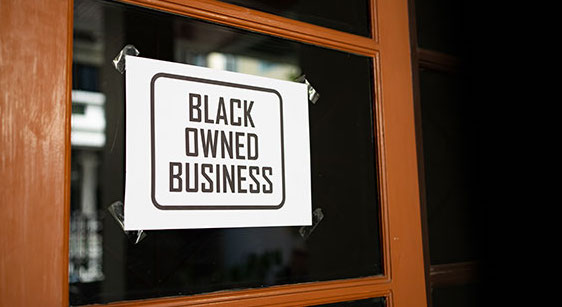••• shopper insights
Convenience is key
Consumers expect advances in contactless shopping
 Consumers’ payment options were expanding before the pandemic but COVID-19 accelerated interest in convenient and contactless shopping – and consumers continue to have high hopes for future options.
Consumers’ payment options were expanding before the pandemic but COVID-19 accelerated interest in convenient and contactless shopping – and consumers continue to have high hopes for future options.
In fact, a study of 1,500 U.S. shoppers by Anyline found that, when asked what they prioritize when shopping in-store, 32% of respondents said that speed of shopping trip was their first priority. An independent and autonomous shopping experience was ranked second (27%) while only 16% of shoppers prioritize interacting with retail workers when going into a brick-and-mortar store.
With the introduction of social distancing and the need to limit physical contact between people, 76% of scan-and-go users started utilizing the offering because of the pandemic. For many, this shift will be permanent, with 79% of respondents saying that they plan to continue using scan-and-go once the pandemic ends.
The vast majority of shoppers have a mobile device that is equipped with a digital camera, ready and available as they walk through the aisles. In fact, 79% of respondents shop with their phone in hand, within reach or easily accessible. When asked how they use apps while in the store, shoppers’ three most selected choices were to compare prices (40%), compare brands (25%) and build or update a shopping list (22%).
As for shoppers who are wary of using scan-and-go technology, the top reasons behind their hesitancy include privacy and security concerns. The survey revealed that 35% of smartphone users avoid scan-and-go due to privacy concerns in general. As well, 32% don’t want to go through the initial process of downloading an app to use the technology. Thirty-one percent say they don’t use scan-and-go because they can’t buy certain products with it, such as produce and alcohol.
The study was conducted by Researchscape on behalf of Anyline and polled 1,502 U.S. consumers from December 3-6, 2021.
••• financial research
Shifting priorities
Americans increasingly valuing work-life balance over salary
 The past two years have led us to collectively reevaluate our lives, and for 62% of Americans, this means prioritizing work-life balance over a high-paying salary (22%).
The past two years have led us to collectively reevaluate our lives, and for 62% of Americans, this means prioritizing work-life balance over a high-paying salary (22%).
KeyBank explored this trend as well as implications for financial mobility in the KeyBank 2022 Financial Mobility Survey, which found that, while the desire for greater work-life balance exists, only a quarter (25%) of Americans say they have experienced an improvement in their standard of living compared to 2020. These findings highlight a shift in mentality as Americans take steps to overcome obstacles and realign priorities for financial mobility.
The survey polled more than 1,000 Americans on their financial and work-related priorities after nearly a year of living through a pandemic, revealing the steps they have taken to become more financially mobile. Two in 10 Americans (22%) have made a career shift since the pandemic began, aligning with “The Great Resignation” that defined 2021. Most commonly, Americans chose to retire (22%) or leave for a different role (21%). Those who shifted roles were predominantly younger, with an average age of 37.
Nearly half (46%) of respondents say the pandemic has altered their financial priorities and 49% say it has led them to think more about how to grow their finances – especially those who self-identify as “financial experts” (80%).
Among those who faced notable challenges this year (37%), three-quarters are confident in their ability to grow their finances. This represents a higher percentage than those who did not face notable challenges.
After confronting the hardships brought on by the pandemic, many Americans shifted their priorities to allow more time for themselves and their loved ones, while still focusing on financial health and building financial resilience. While nearly half of Americans say financial information (48%) and digital banking (39%) are top areas that make them feel more financially resilient, respondents are placing greater emphasis on activities that support mental health in 2021 compared to 2020. This includes getting a good night’s sleep (43%), the second-highest factor impacting financial resilience, up 5% since 2020.
Additionally, respondents say open communication with their partner or significant other (35%), proper diet and exercise (30%), personal connections (24%) and daily mindfulness exercises (24%) are all factors that lead to feeling financially resilient. In fact, the survey revealed increases in the number of Americans citing these factors as critical to their financial well-being, with an average increase of 7.2% across these board, compared to 2020.
Survey respondents who self-report their financial savviness as expert-level are also more likely to say they have made a “financial faux pas,” a financial misstep – highlighting a connection between financial experience and confidence. Despite these missteps, taking risks may translate into confidence, as individuals are able to learn and grow their financial skills and know-how for the future.
Notably, eight in 10 (79%) financial experts say they have made a financial faux pas – more than any other group. This group is also more likely to identify with a “you only live once” financial attitude (34%), than “cautiously optimistic” (32%) and “playing it safe” (31%).
Financial experts’ top three financial faux pas include spending their tax return instead of saving it, reacting to market volatility and relying on non-experts to make decisions. Seven in 10 (71%) financial experts are very confident in growing their finances compared to only 6% who say they are not confident.
In a year marked by a shift toward social justice and equity, it’s notable that Americans with lower incomes are still reporting less financial savviness and confidence across the board, compared to those with higher incomes – likely due to social determinants of financial mobility.
Nearly four in 10 (38%) Americans who make less than $25,000 per year report being “not financially savvy,” compared to the 15% of Americans making between $50,000-$99,000 in annual salary who report the same, indicating a direct correlation between income and perceived savviness.
And yet, it’s Americans who are making less than $25,000 annually who report spending more and saving less in the past year (18%). This makes sense, as Americans with greater incomes may have had the luxury of pulling back on discretionary expenses, while those with lower incomes may have needed to continue spending the same portion of their earnings on essentials.
Despite the disparities in perceived financial savviness and financial confidence, Americans across the board report that the No. 1 thing that made them feel financially resilient during the pandemic was financial information (48%). This access to financial information has empowered Americans over the past year, with about half reporting that they have become more financially aware due to challenges faced in 2021.
To protect from financial faux pas, most Americans report that they identify and prioritize needs vs. wants (29%) and determine a monthly budget to revisit on a weekly basis (24%). Access to financial information is crucial to making these spending/budgeting determinations.
The survey was conducted online by Schmidt Market Research and polled 1,081 Americans ages 18-70 with sole or shared responsibility for household financial decisions and that own a checking or savings account. Responses were collected between September 30-October 2, 2021.
••• travel research
Fun for the whole family
Study explores shifts in vacation planning
 Are you in need of a vacation? According to research from Vrbo, U.S. families are looking forward to vacationing in 2022 and will book early, stay longer and let kids call the shots.
Are you in need of a vacation? According to research from Vrbo, U.S. families are looking forward to vacationing in 2022 and will book early, stay longer and let kids call the shots.
Vrbo’s report found that families are shifting their attention to new destinations, with rental demand more than doubling in Cincinnati; Yorktown, Va.; Niagara Falls, N.Y.; Harrisburg, Pa.; and Matanuska-Susitna, Alaska.
After an irregular 18 months leading to when the survey was conducted in September 2021, parents reported being more likely to reward their kids with extra-special vacations and give them a bigger say in vacation planning. Half of the families said they’re more likely to let their kids decide where they vacation, compared to pre-pandemic times, and one in three are more likely to let their kids invite a friend. Additionally, 43% of parents are more likely to let their kids skip school for vacation. One place where parents still rule: 61% of those surveyed said they are more likely to require their children to disconnect from their devices on vacation.
With the huge uptick in pet ownership over the course of the pandemic, more families are opting to bring their furred companions along on vacation. Vrbo experienced a 40% increase in year-over-year demand for pet-friendly vacation homes. More than 70% of this year’s survey respondents were pet owners, 68% of whom have traveled, plan to travel or would like to travel with their pets. The top reason for traveling with pets is because families don’t like leaving them, followed by wanting the whole family to be together.
In 2021, booking activity on Vrbo occurred on average two to three months earlier than usual for several major travel seasons, like summer and the holidays. Sixty percent of respondents said they plan to book future vacations earlier than they did in pre-pandemic times.
As people started returning to the office and employers introduced partial or even permanent work-from-home policies, families changed their outlook on vacation time, flexibility and work-life balance. Seventy-seven percent of families agreed that they have a greater appreciation for separating their professional and personal lives, compared to pre-pandemic times. Further, 59% of respondents said they are more likely to take a two-week vacation and 30% were more likely to take a sabbatical, while 42% were less likely to check work e-mail on vacation.
The study used Vrbo travel demand data in the U.S. for the 12-month period ending August 31, 2021. Vrbo conducted a survey of 1,000 U.S. families during September 2021.
••• small business research
Making it work
Black-owned businesses find growth despite pandemic
 From February 2020 through August 2021, Black-owned businesses increased by almost 40% despite the slight drop in white- and Asian-owned businesses – but according to a MerchantMaverick report, some states are fostering more Black entrepreneurship than others.
From February 2020 through August 2021, Black-owned businesses increased by almost 40% despite the slight drop in white- and Asian-owned businesses – but according to a MerchantMaverick report, some states are fostering more Black entrepreneurship than others.
While on the rise, Black-owned businesses still face hurdles to grow representatively; only 2.3% of the employer businesses in the U.S. are Black-owned despite African Americans making up over 14% of the population.
The mid-Atlantic pocket of Virginia, Maryland and Delaware is particularly fruitful for Black entrepreneurs, as the trio ranked first, second and fifth, respectively, in MerchantMaverick’s list of the top 10 states for Black entrepreneurs in 2022. The region’s success can be attributed to its sizable Black population, as well as local government and private initiatives built to foster Black-owned businesses.
Southern states generally dominate the ranking. In fact, just one top 10 state (Ohio) is firmly located in the northern half of the contiguous 48 states. The southern dominance extends past the pinnacle as the three highest-ranked states outside the top 10 (Mississippi, Tennessee and Arkansas) are all located soundly in the South. In order, the top 10 states for Black entrepreneurs in 2022 are: Virginia, Maryland, Texas, Nevada, Delaware, North Carolina, Ohio, New Mexico, Georgia and Alabama
Black-owned businesses face major inequities when it comes to payroll. The national average annual payroll for employer businesses is $1.25 million – over four times the $301,000 in payroll Black-run employer businesses average per year. A funding gap almost certainly plays a role here. Earlier research by the Stanford Institute shows that White-owned businesses receive an average of $18,500 in outside equity at founding, compared to just $500 for Black-owned businesses. Already starting at a disadvantage, Black businesses face hurdles while attempting to catch up down the road.
MerchantMaverick developed its “Top States for Black-Owned Businesses in 2022” report by analyzing data from sources including the U.S. Census Bureau’s 2020 Annual Business Survey, the U.S. Bureau of Economic Analysis and TaxRates.org.
••• health care research
Inequities old and new
Consumers face challenges when accessing health services
 While the pandemic caused a variety of new problems for the health care industry, for many Americans it also exacerbated disparities in health care access that already existed before 2020.
While the pandemic caused a variety of new problems for the health care industry, for many Americans it also exacerbated disparities in health care access that already existed before 2020.
While 70% of health care consumers see a doctor or access health services regularly, 25% of all health care consumers in the U.S. say it is difficult for them to access health care from high-quality doctors or hospitals. These findings come from the “State of Access to Healthcare in America” report released by Teva Pharmaceuticals in collaboration with the Morehouse School of Medicine. The survey uncovered that access barriers due to the pandemic impacted groups that are already likely to be more vulnerable, with caregivers (58%), women (53%), patients (74%), BIPOC (45%) and those with anxiety (29%) and depression (25%) reporting greater difficulty with health care access.
For the report, the Harris Poll surveyed 4,188 U.S. consumers and more than 600 health care providers (HCPs) including physicians, pharmacists and nurses, about their experiences accessing and providing health care during the pandemic. The survey found that approximately 40% of HCPs report that the overall health of the patients they see has worsened since before the pandemic, while at the same time consumers are uncomfortable or limited in reaching the nearest hospital emergency room or urgent care facility, both due to the pandemic but also due to persistent barriers to accessing health care services.
Among health care consumers, 50% say they postponed or canceled health care services since the pandemic began. Routine exams, annual health checks and dental care are most often avoided. Some 64% of health care providers also report that patients postponed or had to delay seeking health care due to the pandemic. Those facing access issues are far more likely to delay or cancel a health care consultation for an adult or child in the household (cancel or delay an adult visit 70%/77%; child visit 72%/77%) compared to those who do not (cancel or delay an adult visit 36%/49%; child visit 47%/53%).
Consumers who delayed care cited exposure to COVID-19 as the primary reason but other reasons include inability to take time off, lack of childcare or lack of transportation, especially for younger, Hispanic and lower-income households. Economic barriers were also a factor for BIPOC consumers with 25% receiving unemployment benefits during the pandemic. Notably, one in 10 consumers also report challenges with prescription access or medication shortages and this is a greater problem among younger health care consumers, urbanites, parents and BIPOC consumers.
While 47% of physicians say their practice experienced a decrease in routine visits, 59% report increases in mental health consultations. A vast majority of physicians (84%) report an increase in new diagnoses of mental health conditions since the pandemic began, with nearly two-in-three (65%) also mentioning worsening conditions among pre-diagnosed patients. Mental health conditions (anxiety and depression) are reported more among Hispanic adults, women, younger adults, adults residing in lower-income households or those with lower education.
Looking ahead, telehealth is expected to be a prominent approach for addressing health care needs and inequities in access, with 58% of consumers saying they are likely to use telehealth to see/visit their doctor or health care provider after the pandemic. Like health care consumers, three-fourths of physicians and over half of pharmacists say they are likely to continue offering telehealth consultations even after the pandemic. However, telehealth is still not accessible to everyone, with more than one in three physicians and about half of pharmacists noting that most of the patients they serve are from low-income households and do not have the means to easily access telehealth. Three-fourths of physicians and 50% of pharmacists intend to provide virtual consultations even after the pandemic ends but one-third of health care providers report that access to telehealth is still limited for patients with low incomes.
Although a majority of health care consumers (61%) note they rely on physicians for information, during COVID-19, more than two in five (44%) increasingly turned to other sources of information (e.g., internet searches, patient support groups and social media) to help them and their family access the resources they need. Nearly 40% also indicated relying more on other types of health care professionals besides doctors (e.g., nurses and pharmacists) for their health care needs. Most health care consumers (65%) also shared that they intended to pursue lower-cost care options like using over-the-counter/generics over branded medicine, as well as look for smaller or low-cost clinics, among other solutions.
The survey was conducted online by The Harris Poll on behalf of Teva and polled 4,188 U.S. adult health care consumers and 602 health care providers (201 PCPs, 201 NPs/PAs and 200 pharmacists) from September 30-October 20, 2021.